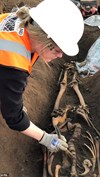About the projects
Wetland Futures & Sustainable Forests: in situ monitoring approaches.
This project represents a collaborative endeavour with Malcolm Lillie, Professor of Archaeology at Umeå University, who is an Artic Five Chair (https://arcticfive.org/). Prof. Lillie specializes in in situ preservation for archaeological and landscape applications, and his current research focuses on how cultural heritage is affected by climate change, and evaluating what methods and strategies are required to preserve heritage for future generations.
Sustainable Forests and Archaeology: harnessing interdisciplinary GIS and AI approaches to ‘future-proof’ Sweden’s cultural and forestry heritage
This project is undertaken in collaboration with Philip Buckland (Environmental Archaeology, Umeå University), Niklas Eklund (Political Sciences, Umeå University), Hans Antonsen (Consultant), and Camilla Eriksson (Haninge Kommun). The first stage of funding for this project has been obtained from the RAÄ, ‘Prioritering av klimathotade kulturhistoriska värden – Synsätt och metoder’ (2023-2025, Dnr RAÄ-2022-2425). It is also a continuation of earlier work funded by the Swedish Transport Administration (Trafikverket), which can be found here.


